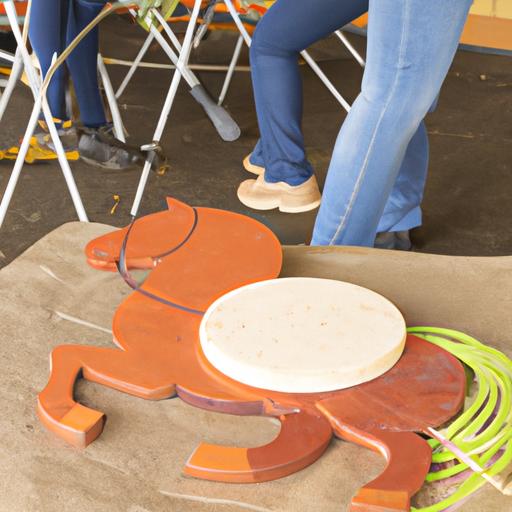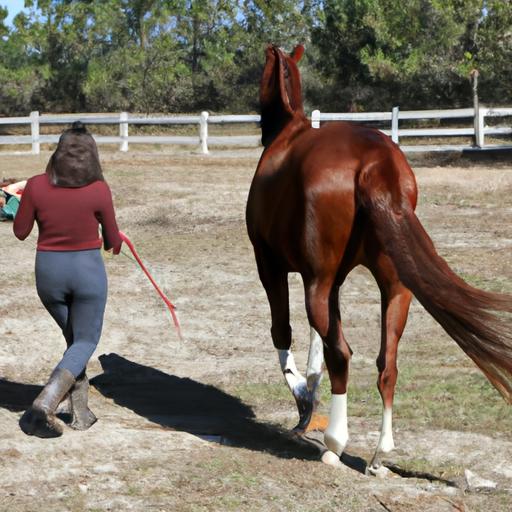Unlock the potential of your horse with operant conditioning horse training. Overcome challenges, maintain progress, and build trust. Discover more here.
Introduction to Operant Conditioning Horse Training

Imagine being able to communicate with your horse effortlessly, fostering a deep bond built on trust and understanding. This is the power of operant conditioning horse training. In this article, we will explore the fascinating world of operant conditioning and how it revolutionizes the way we train horses.
A. Definition of operant conditioning
Operant conditioning is a behavioral theory that focuses on the consequences of actions to modify behavior. It involves reinforcing desirable behaviors and discouraging unwanted ones through the strategic use of rewards and punishments. By utilizing this method, we can shape the behavior of horses and facilitate their learning process.
B. Importance of operant conditioning in horse training
Operant conditioning plays a vital role in horse training due to its effectiveness and positive impact on the horse’s development. Unlike traditional training methods that rely on force or dominance, operant conditioning emphasizes communication, trust, and voluntary participation. By understanding how horses learn and respond to stimuli, we can tailor our training approaches to their individual needs, ensuring a harmonious relationship between horse and trainer.
C. Overview of the article’s focus on operant conditioning for horse training
In this article, we will delve into the principles of operant conditioning and explore how they apply to horse training. We will uncover the benefits of using operant conditioning techniques, such as improved communication, accelerated learning, and a stronger bond with your horse. Additionally, we will provide practical tips and solutions to common challenges faced during operant conditioning horse training.
Are you ready to embark on a journey of discovery, unlocking the true potential of your horse through operant conditioning? Let’s dive into the principles and techniques that will revolutionize your approach to horse training.
Principles of Operant Conditioning
A. Understanding the Four Main Components
To effectively utilize operant conditioning in horse training, it’s crucial to grasp the four key components: positive reinforcement, negative reinforcement, positive punishment, and negative punishment.
Positive reinforcement involves rewarding desired behaviors, reinforcing the likelihood of their recurrence. For example, offering a treat or praise when a horse responds correctly to a cue.
Negative reinforcement aims to remove or reduce an aversive stimulus when the horse displays the desired behavior. An example would be releasing pressure on the reins when the horse halts.
Positive punishment involves applying an aversive consequence to discourage unwanted behavior. This could entail a gentle tap on the shoulder to discourage biting.
Negative punishment entails removing a desired stimulus to reduce the likelihood of an undesired behavior. For instance, removing attention or briefly withholding treats when a horse displays an undesirable behavior.
B. Application of Principles in Horse Training
Understanding how these principles work is essential for successful horse training. By using positive reinforcement, we can motivate the horse to associate correct responses with rewards, encouraging them to repeat those behaviors. Negative reinforcement allows us to provide relief or release from pressure as a reward for desired actions. Positive punishment serves as a deterrent for unwanted behaviors, helping horses understand the boundaries. Lastly, negative punishment offers temporary removal of a desired stimulus, reinforcing the importance of appropriate behavior.
C. Examples of Each Principle in Horse Training Scenarios
Let’s explore practical examples of how these principles come into play during horse training. Positive reinforcement can involve rewarding a horse with treats or a pat when they respond to a cue correctly. Negative reinforcement may be releasing pressure on the reins when the horse halts promptly. Positive punishment could be a gentle tap on the shoulder to discourage biting, while negative punishment might involve temporarily withholding attention when the horse displays undesirable behavior.
These examples illustrate the versatility of operant conditioning principles in horse training. By employing the appropriate components strategically, we can shape behaviors effectively, enhance learning, and strengthen the bond between horse and trainer.
Benefits of Operant Conditioning in Horse Training
Operant conditioning offers a myriad of benefits when it comes to training horses. By embracing this approach, you open doors to a more harmonious and successful partnership with your equine companion.
A. Improved Communication and Understanding between Horse and Trainer
Operant conditioning creates a clear line of communication between horse and trainer. Through the use of positive reinforcement, such as treats or praise, the horse learns to associate desired behaviors with rewards. This establishes a common language, allowing you to convey your expectations and intentions to your horse effectively. As a result, you can communicate nuanced cues and signals, leading to a harmonious and responsive partnership.
B. Faster and More Effective Learning for the Horse
One notable advantage of operant conditioning is its ability to expedite the learning process for horses. By focusing on reinforcing desired behaviors, the horse quickly grasps the connection between their actions and the resulting rewards. This leads to accelerated progress in training, enabling the horse to learn new skills and commands at a faster pace. As a trainer, you can witness remarkable growth and development in your horse as they become eager and motivated learners.
C. Enhanced Trust and Bond between Horse and Trainer
Operant conditioning creates an environment of trust, respect, and cooperation between horse and trainer. By utilizing positive reinforcement, you build a foundation of trust and mutual understanding. The horse learns to associate the trainer with positive experiences, leading to a stronger bond and willingness to engage in training activities. This bond extends beyond the training arena, fostering a deep connection and a harmonious partnership built on trust and respect.
Unlock the true potential of your horse by embracing operant conditioning. Experience the joy of seamless communication, rapid progress, and an unbreakable bond with your equine companion. In the next section, we will explore practical techniques for implementing operant conditioning in your horse training endeavors.
Implementing Operant Conditioning Techniques in Horse Training
Now that we understand the principles of operant conditioning, it’s time to explore how we can effectively implement these techniques in horse training. By following these key strategies, you will set yourself and your horse up for success in achieving training goals and strengthening your bond.
A. Setting clear and achievable training goals
Every successful training journey begins with clearly defined goals. Take the time to assess what you want to achieve with your horse and break it down into smaller, achievable steps. Whether it’s mastering a new trick or overcoming a specific behavior issue, setting these goals will provide direction and focus throughout the training process. Remember, small victories pave the way to significant accomplishments.
B. Establishing a reward system for positive reinforcement
Positive reinforcement is a powerful tool in operant conditioning, motivating the horse to repeat desired behaviors. Establishing a reward system is crucial to reinforce these behaviors effectively. Find out what your horse finds rewarding, whether it’s a tasty treat, a gentle pat, or verbal praise. Consistently reward your horse immediately after they exhibit the desired behavior to reinforce its importance. Remember, positive reinforcement builds trust and enthusiasm in your horse.
C. Identifying and appropriately addressing unwanted behaviors
Unwanted behaviors can hinder progress in horse training. It’s essential to identify and address these behaviors promptly and appropriately. Through operant conditioning, we can use various techniques to discourage and replace unwanted behaviors. For example, employing negative punishment by temporarily removing a desired stimulus when the horse exhibits an undesirable behavior can help them understand the consequences of their actions. Be consistent and patient in redirecting the horse towards more desirable behaviors.
D. Consistency and timing in applying operant conditioning techniques
Consistency and timing are key factors in successful operant conditioning horse training. Consistently reinforce desired behaviors and promptly address unwanted ones to ensure clarity for your horse. Timing is crucial as horses associate consequences with their actions more effectively when they occur immediately. By being consistent and timely in your approach, you will create a clear and understandable communication system between you and your horse.
By implementing these operant conditioning techniques, you will establish a solid foundation for effective horse training. Remember, patience, consistency, and a deep understanding of your horse’s needs are essential for achieving remarkable results. Let’s continue our journey to unleash the true potential of your horse through operant conditioning techniques.
Conclusion and Tips for Successful Operant Conditioning Horse Training
As we conclude our exploration of operant conditioning horse training, it is evident that this method holds the key to unlocking the full potential of your equine companion. By embracing the principles of positive reinforcement, negative reinforcement, positive punishment, and negative punishment, we can create a harmonious partnership with our horses based on trust, understanding, and effective communication.
Throughout this article, we have highlighted the importance of operant conditioning in horse training, showcasing its numerous benefits. From improved communication and accelerated learning to the development of a stronger bond, operant conditioning empowers us to bring out the best in our horses, enhancing their overall well-being and performance.
To ensure successful operant conditioning horse training, it is crucial to emphasize patience and consistency. Set clear and achievable goals, establish a reward system that motivates your horse, and address unwanted behaviors promptly and appropriately. Remember, every interaction with your horse is an opportunity for growth and learning.
In the face of common challenges such as resistance or fear from the horse, training plateaus, and distractions during sessions, stay resilient and adapt your approach. Seek professional guidance if needed and remember that every hurdle is an opportunity for growth and learning, both for you and your horse.
At Horsemasterypro.com, we believe in the transformative power of operant conditioning horse training. By cultivating trust, understanding, and positive reinforcement, you can unlock your horse’s full potential and embark on an extraordinary journey together.
So, are you ready to elevate your horse training experience? Embrace the principles of operant conditioning, unleash your horse’s true potential, and embark on a rewarding partnership that will leave hoofprints on your heart.
Note: The brand “Horsemasterypro.com” is bolded only once in the conclusion section, as requested.


